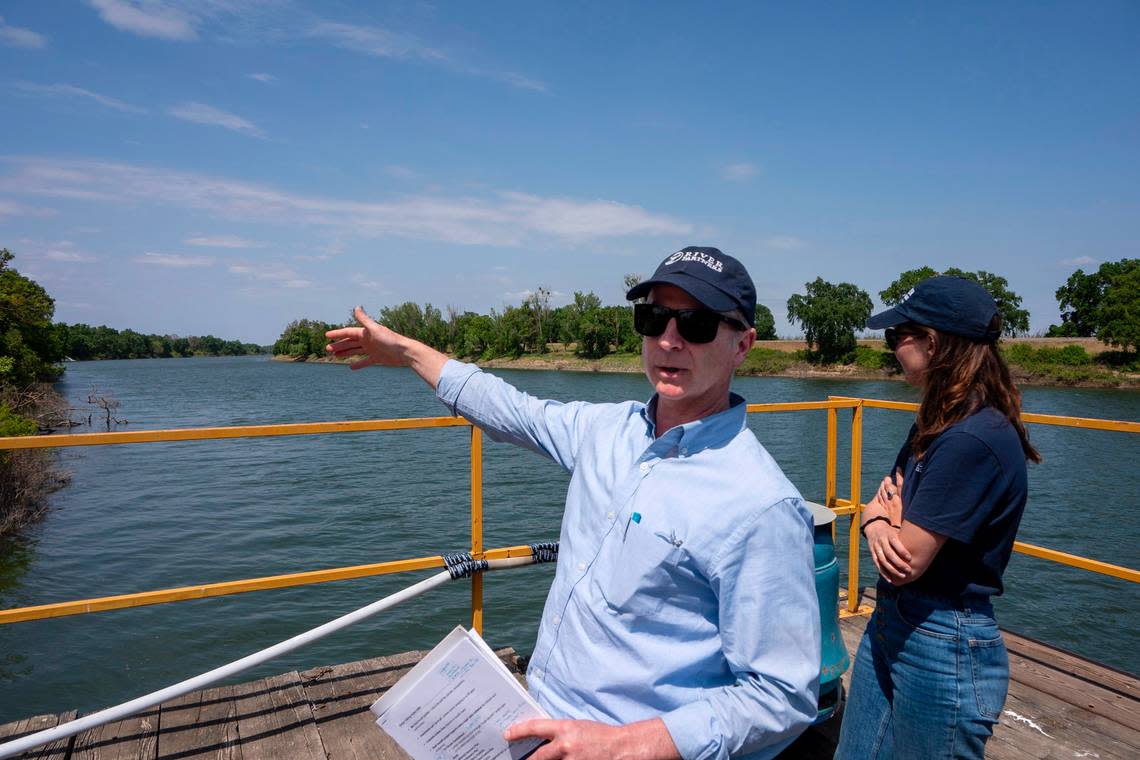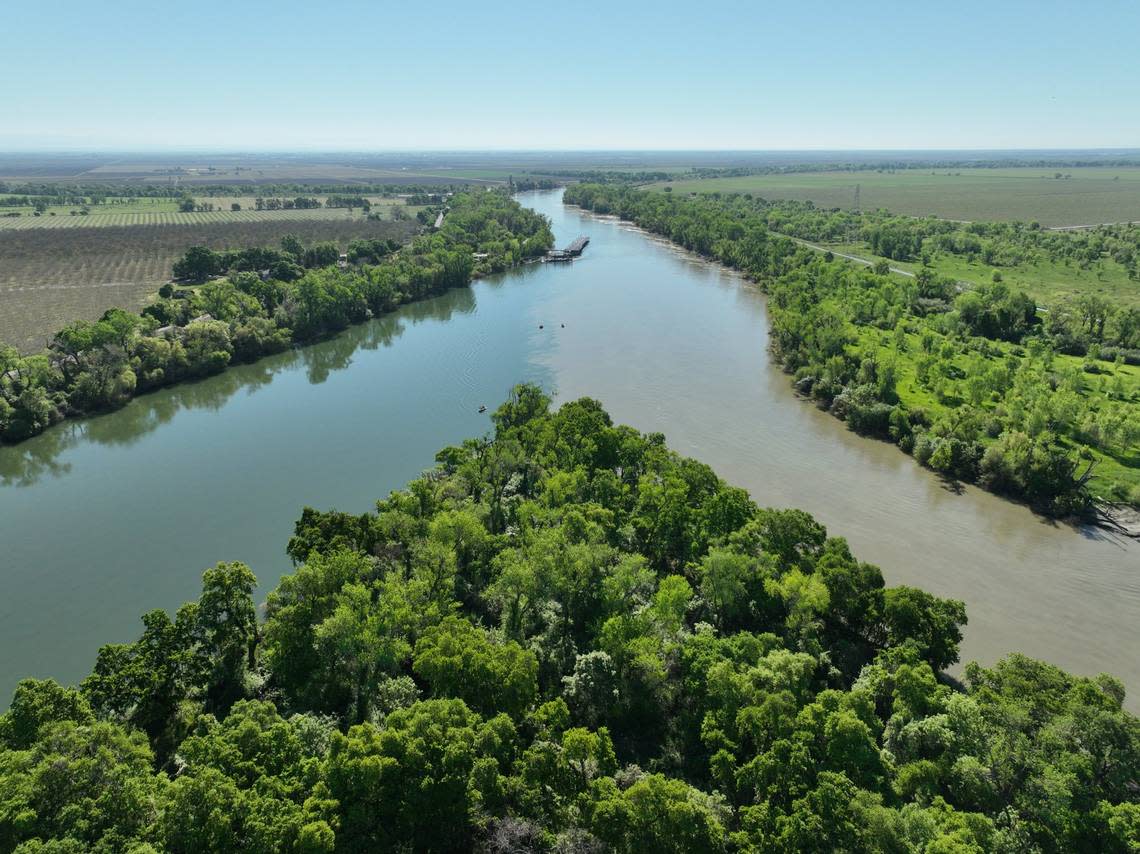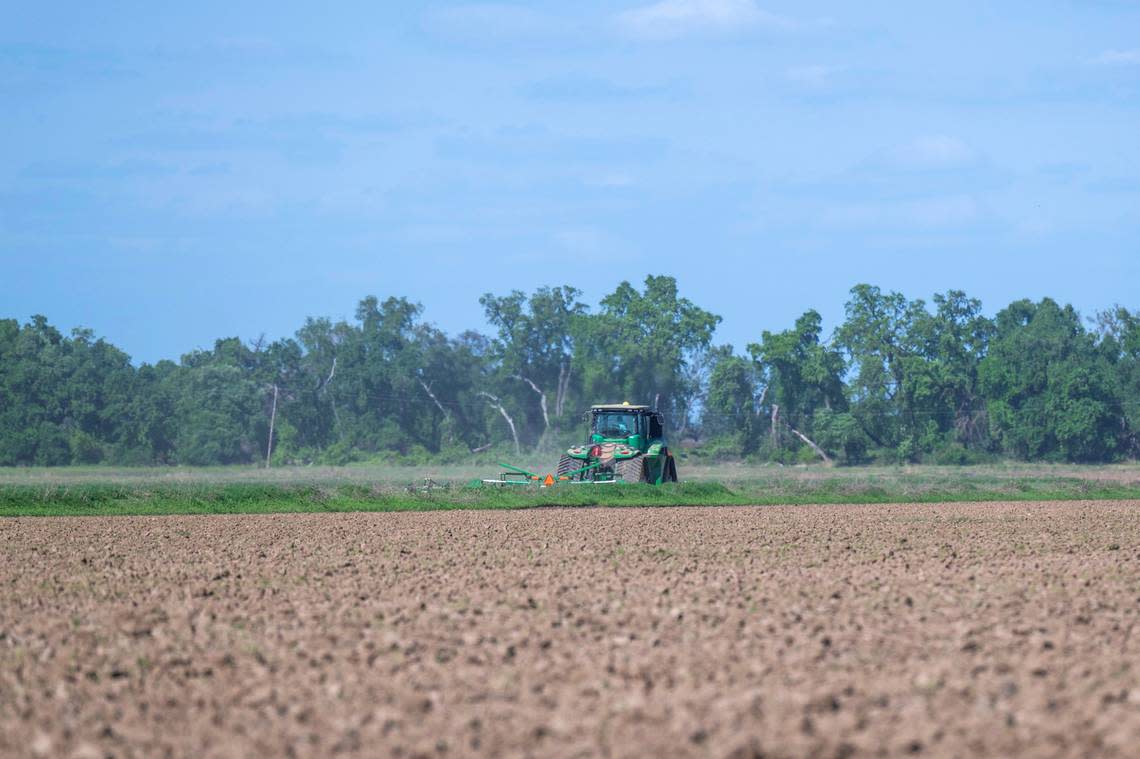A tech giant is helping restore these Sacramento Valley rice fields to a floodplain. Here’s why
A thousand years ago, native fish and birds rested in a fertile floodplain at the intersection of the Sacramento and Feather rivers and Butte creek along their migratory routes. Since the turn of the 20th century, the area has been engulfed in rice fields.
But in the next decade, the bygone natural floodplain is coming back. That’s after California conservation nonprofit River Partners secured millions for restoration work on 750 acres from state wildlife agencies and Apple Inc., the multinational tech company.
It’s all part of the state’s effort to conserve important wild lands for their myriad climate benefits and Apple’s support for clean energy and conservation projects to counterbalance pollution and water consumption from its operations.
“This one piece of property does so much for the state of California,” said River Partners spokesperson Alex Karolyi, referencing the state’s sweeping climate goals. “If we have essentially six more years to offset the heaviest impacts of a changing climate, we need to be doing more projects just like this.”
Conservationists say taking these fields out of production and restoring the natural floodplain, which will start in 2027, will significantly benefit the state’s imperiled native salmon and create water savings of approximately 7,000 acre-feet a year.
They hope that someday, this Sutter County property just north of the Sacramento International Airport could become a new state park akin to Dos Rios on the San Joaquin River, recently inaugurated by Gov. Gavin Newsom.
“A lot of us are seeing this as the next Dos Rios, which means we’re going to apply all the lessons we’ve learned down there,” Karolyi said. This project is temporarily being called Dos Rios Norte, marking the confluence of two of California’s major rivers.

A special confluence of waterways
The land is home to a uniquely mature riparian forest of valley oaks and abundant native sedge grasses. These plants have remained in tact along the riverbanks that were left as a buffer between the water and rice fields, narrowing to a point at the rivers’ confluence.
Restoration of the property will happen in stages, include carving channels into the soil to promote the property’s return into a natural floodplain. River Partners will also plant native vegetation and fauna, and temporarily irrigate them until the landscape is self-sufficient.
Leaders of the Shingle Springs Band of Miwok Indians, whose tribe traces historical connections to the property and wider region, said they look forward to working with project managers on restoration efforts and help give the land a permanent name.
“The land holds cultural and spiritual significance for my Tribe. Two of our ancestral matriarchs and their families once lived here, fished here and gathered here,” wrote tribal vice chair and traditional ecological knowledge director Malissa Tayaba.
“Having access to cultural landscapes we were once removed from gives us the opportunity to help heal the land, preserve our plant and animal ancestors and restore our salmon to these waterways.”
Letting the land flood will not only create more hospitable habitat for migrating fish, but also better conditions for zooplankton to flourish. It’s a crucial food source for salmon and will also support threatened birds such as the yellow billed cuckoo.
Virtually every species of native salmon are in peril. Fewer than 80,000 Central Valley fall-run Chinook salmon returned to California rivers to spawn in 2022, according to the California Department of Fish and Wildlife. That marked a nearly 40% decline from the previous year, and the lowest since 2009.
“I would never have thought I could work on a project like this that will make so much of a difference,” said Mike Davis, restoration science ecologist and project manager at River Partners. “Three major waterways intersect here, so it unlocks a valleywide ecosystem.”

What will it cost?
River Partners is still looking for funding from public grants and corporate contributions to restore the majority of the 1,600-acre property, which they expect to someday make accessible to the public. It also needs to secure permits from the U.S. Army Corps of Engineers by proving the project won’t increase flood risk.
Representatives of Apple did not disclose its contribution to River Partners, who estimates the costs of restoration at $25,000 an acre. But a spokesperson for the company did say it committed over $8 million across four water projects including this one.
“Apple is proud to accelerate progress toward our 2030 goal to replenish all of the freshwater withdrawals from our corporate operations in high-stress locations like here in Northern California,” said Apple’s vice president of global real estate Kristina Raspe.

The restoration of Dos Rios Norte is also slated for funding from the California Department of Fish and Wildlife, the California Natural Resources Agency, the California Wildlife Conservation Board, and the U.S. Bureau of Reclamation.
It contributes to Gov. Gavin Newsom’s goal of preserving 30% of California’s coastal waters and lands by 2030 to expand nature access, address climate change and protect biodiversity. In another recent initiative, the Newsom set targets for nature-based carbon sequestration.
Those goals don’t explicitly mention converting land used for agriculture, a relatively small but important California industry, to wildlands. Lundberg Farms, which currently leases the River Partners property to grow rice, considers Dos Rios Norte a unique opportunity.
Mike Denny, vice president of operations at Lundberg Farms, said much of the property is, as a natural floodplain, a challenging place to grow rice anyway.
“It’s essentially the bottom of the bathtub, and so drain water from the north valley just sits there. So some of that acreage cannot be farmed effectively,” said Mike Denny, vice president of operations at Lundberg Farms.
“I think the bottom line is this project is a great opportunity for agriculture, and environmentalists kind of work together. And that doesn’t always happen.”
